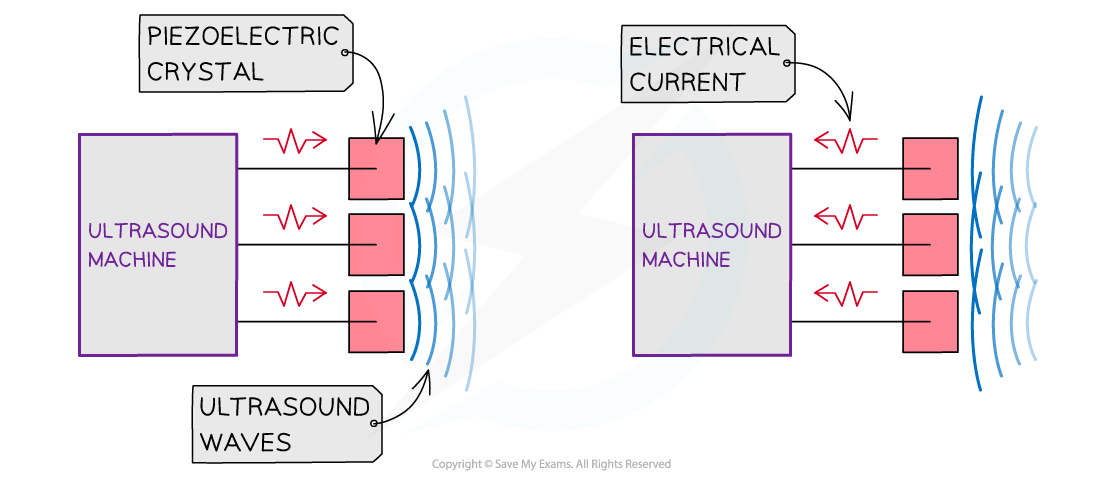Generating Ultrasound
- An ultrasound is defined as:
A high frequency sound above the range of human hearing
- This is above 20 kHz, although in medical applications the frequencies can be up to the MHz range
- An ultrasound transducer is made up of a piezoelectric crystal and electrodes which produce an alternating p.d.
- The crystal is heavily damped, usually with epoxy resin, to stop the crystal from vibrating too much
- This produces short pulses and increases the resolution of the ultrasound device

The structure of an ultrasound transducer
- A piezoelectric crystal can act as both a receiver or transmitter of ultrasound
- When it is receiving ultrasound, it converts the sound waves into an alternating p.d.
- When it is transmitting ultrasound, it converts an alternating p.d. into sound waves

A piezoelectric crystal can act as both a receiver or transmitter of ultrasound
Worked example
Explain the principles of the generation and detection of ultrasound waves.
Generation:
-
- An alternating p.d. is applied across a piezo-electric crystal, causing it to change shape
- The alternating p.d. causes the crystal to vibrate and produce ultrasound waves
- The crystal vibrates at the frequency of the alternating p.d., so, the crystal must be cut to a specific size in order to produce resonance
Detection:
-
- When the ultrasound wave returns, the crystal vibrates which produces an alternating p.d. across the crystal
- This received signal can then be processed and used for medical diagnosis


